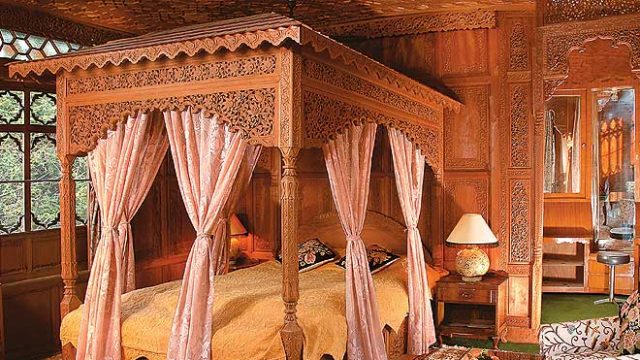A classic Kashmir valley itinerary features 2-3 days at Srinagar packed with local sightseeing (including the fabled gardens and boating on the Dal, naturally) and shopping. Plan for at least one night on a houseboat—WelcomHeritage’s Gurkha houseboats (from Rs 10,000; www.welcomheritagehotels.in) on Nagin makes for a quieter stay. There’s the essential day trip to Sonmarg, plus a couple of days in Pahalgam with excursions to scenic Chandanwari, the icy Pulian lake, and the Aru and Betaab valleys. Now for the offbeat, all of it less than 100km from Srinagar: Kokernag, the largest freshwater spring in Kashmir; the saffron fields of Pulwama (mustard, cherry and almond too); the Martand temple at Anantnag with views from its plateau-like vantage; the pine meadows by the milky waters of the Doodhganga at Yusmarg (trek from here to Neel Nag and Verinag); the Wadi-e-Lolab (along with the Potani, Kalaroos and Brunai vales nearby) and its picturesque fruit gardens and paddy fields; the Dachigam National Park, a mere 23km from Srinagar and home to musk deer, marmots, golden orioles and redstarts (though June to September is a better time to visit); a surreal sunset over the snow-capped peaks visible from Chatpal (if you are up to managing without electricity, you could stay at night at the government rest house here); and the stunningly panoramic views of the perennially snowbound Sinthan Top (but it’s a longer haul of 140km to get here); the wild horses grazing at the alpine meadows of Budgam’s Doodhpathri; and if you enjoy imbibing local culture, the Craft Development Institute in Nowshera, and stop at the Lal Ded Centre at Ganpatyar in Srinagar.
Check the conditions of the roads after the winter snow, and the road to Yusmarg may not be motorable in March. Ask www.mascottravels.com for a diverse range of adventure activities. You don’t mention a budget but, if you can afford it, you can’t go wrong with The Lalit Grand Palace (from Rs 112,000; www.thelalit.com) or Vivanta by Taj-Dal View (from Rs 15,000; www.vivantabytaj.com) in Srinagar. The Vintage (from Rs 18,500; www.thevintage.in) offers boutique luxury in Gulmarg and the Khyber Mountain Resort and Spa (from Rs 11,000; www.khyberhotels.com) is the height of five-star luxury here.
Yes, the floods of last year devastated the valley but things are chugging along willy-nilly. You will find that Kashmir continues to welcome visitors warmly, even more so as it rebuilds its economy.




